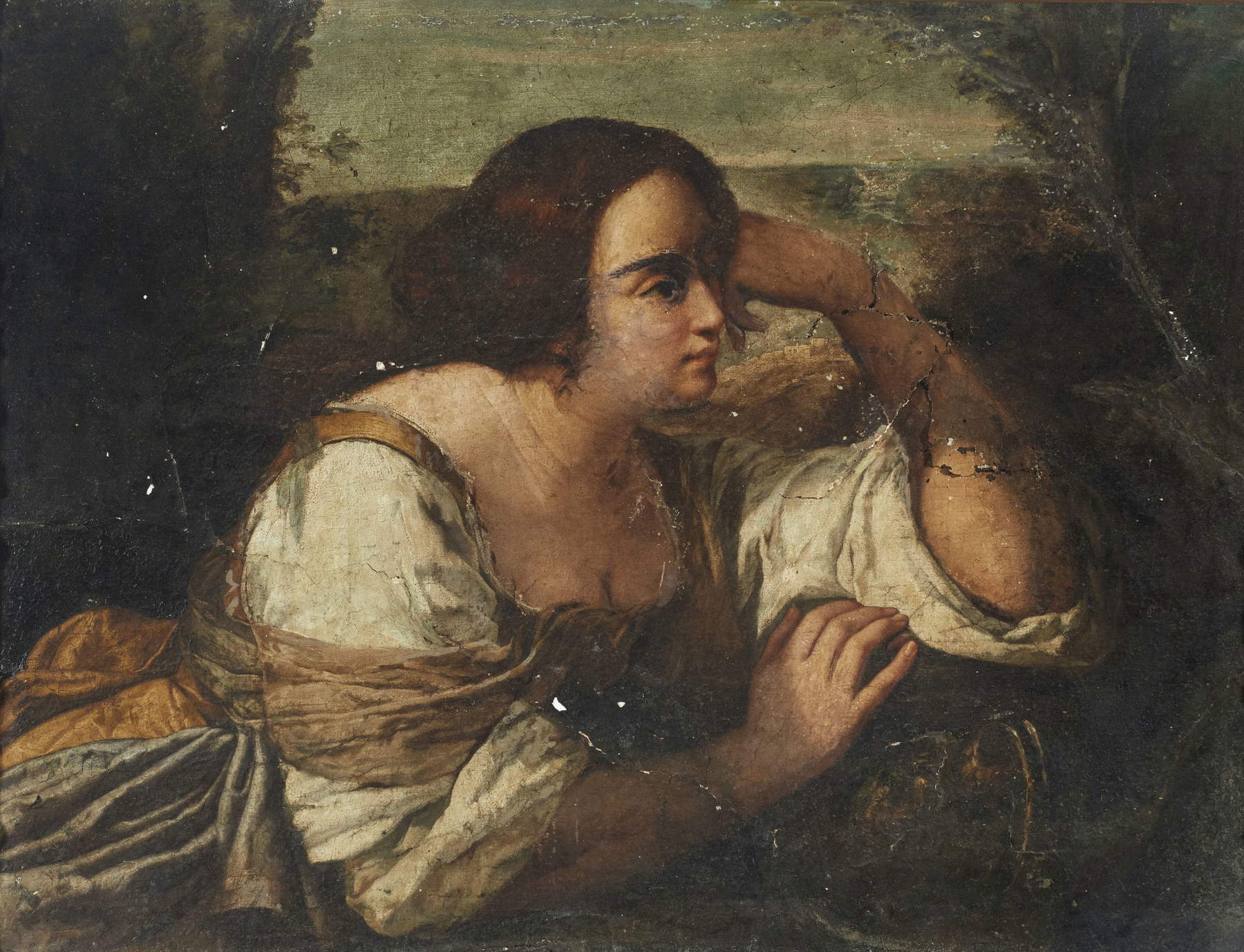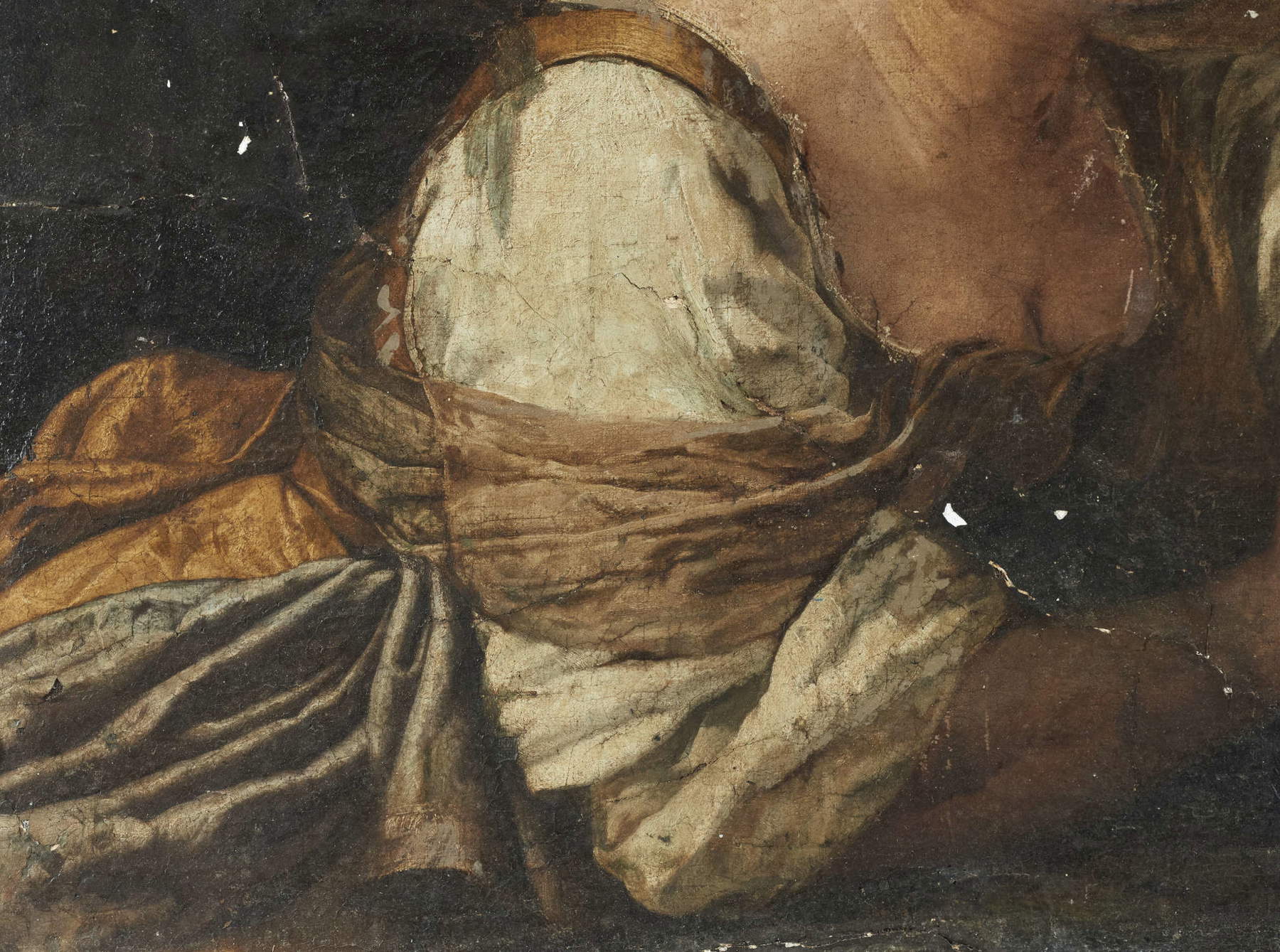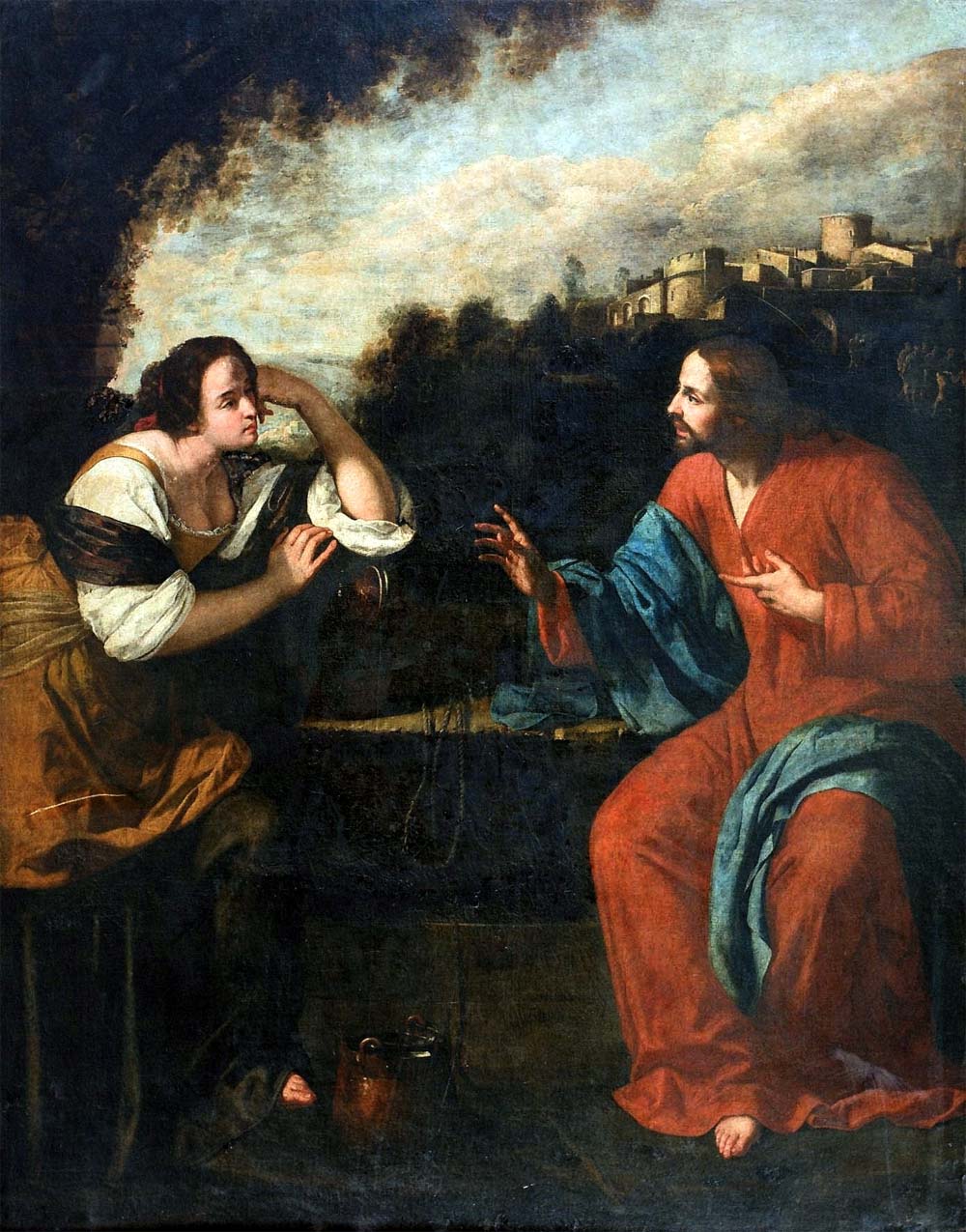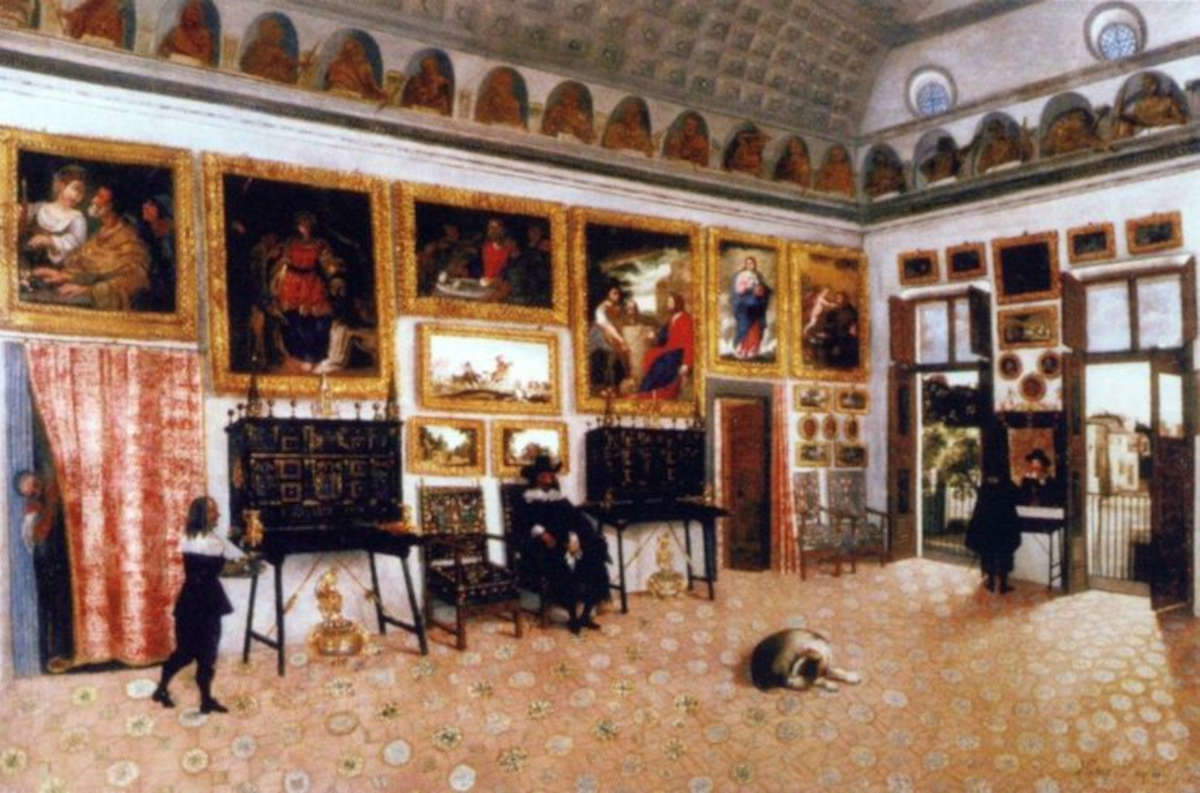A painting has been attributed to Artemisia Gentileschi (Rome, 1593 - Naples, 1654/1656) that will go up for auction at Capitolium in the 250-plus-lot auction sale to be held Oct. 14 and 15, 2025. The attention of international collectors and art historians is focused on lot 25: it is an oil on canvas measuring 85 by 109.5 centimeters depicting a half-length female figure, recognized by two authoritative scholars, Riccardo Lattuada and Nicola Spinosa, as a certain autograph work by Artemisia Gentileschi. Both, asked separately, agreed that the painting represents a fragment of a second and hitherto unknown version of the large altarpiece with Christ and the Samaritan Woman at the Well purchased in 2022 for the collection of Palazzo Blu in Pisa.
The discovery of another Samaritan Woman in Artemisia’s hand is not a marginal event. Indeed, the Pisa work is considered a masterpiece in the catalog of the artist, a central figure in Caravaggesque painting and a symbol of the female condition in the 17th century. Lattuada and Spinosa, observing the Capitolium canvas, identified under the dirt encrustations and damage from a poorly conducted restoration a painting of the highest quality. The work will go to auction with an estimate of 20-30,000 euros: the very low figure is evidently due to the work’s condition.

The appearance on the market of this fragment opens new scenarios for the knowledge of Artemisia Gentileschi’s work and enriches the debate around the Samaritan Woman of Palazzo Blu, already the subject of extensive studies. Found in 2004 in a Sicilian private collection and made known by Luciano Arcangeli in 2007, the Pisan canvas had been analyzed in detail by Francesco Solinas, who published a seminal essay on the subject in 2023.
Solinas’ research had reconstructed the painting’s collecting history. The fragment proposed by Capitolium Art, which depicts the Samaritan woman in the foreground, differs in several respects from the Pisan work. The figure appears with her face less tilted backward and her complexion softer and more nuanced. Even the clothes, while similar in composition, are distinguished by greater chromatic variety and richer effects of light and transparency. The famous bright yellows and iridescences that distinguish Artemisia’s palette find even more virtuosic expression in this version, testifying to the artist’s full technical maturity.
Francesco Solinas’ research has provided a solid basis for the reconstruction of the history of the Samaritan Woman at the Palazzo Blu, identifying some documentary references that could now relate, at least in part, to the version found by Capitolium Art. The first certain mention of a large altarpiece with Christ and the Samaritan Woman at the Well dates back to the autumn of 1637, when Artemisia wrote to her Roman patron Cassiano del Pozzo to ask him to propose the work to the nephews of Pope Urban VIII, Cardinals Francesco and Antonio Barberini. Despite the painter’s interest, the painting does not appear in the Barberini inventories, a sign that the sale was unsuccessful.


A later trace emerges some thirty years later, around 1670, in a painting by the painter Michele Ragolia, depicting the interior of a Neapolitan patrician home. Among the paintings depicted is a Samaritan woman at the well clearly inspired by Artemisia’s compositional scheme. According to scholars, the scene may allude to the collection of the Ruffo di Sicilia, well-known admirers of the painter. The family’s possessions were later sold at auction beginning in 1676, and it was on that occasion that the work may have been purchased by Giovanni Stefano Oneto, a Genoese businessman who had settled in Sicily in 1643. Upon Oneto’s death, the Samaritan passed by descent to the family from which the Palazzo Blu Foundation acquired it in 2022.
In the relatively limited corpus of works by Artemisia Gentileschi, the Samaritan Woman at the Well occupies a central place. It is a testament to the painter’s Neapolitan phase, the most fruitful and complex of her career, in which Artemisia, by now recognized as a master, produced large canvases for public and religious commissions.


During her twenty-five years in Naples, from 1630 until her death, except for a three-year London interlude, the painter became an art entrepreneur at the head of a structured workshop capable of meeting the growing demand for sacred and secular works. This is the context for the creation of the two Samaritan women, evidence of her ability to tackle biblical subjects with a personal language, characterized by a balance between naturalism and psychological introspection.
In the two versions, the figure of the woman of Samaria takes on a symbolic value that reflects Artemisia’s own human story: the thirst for truth, regained dignity, and the possibility of redemption. The Samaritan woman thus becomes a representation of the feminine strength and artistic awareness that the painter had gained after years of obstacles and prejudice.
Now, the questions raised by the appearance of this new fragment, which may open up the possibility that Artemisia painted two versions of the same work, testify to how much remains to be discovered about Artemisia Gentileschi’s activity. Capitolium Art’s Samaritan Woman brings attention back to the artistic, technical, and entrepreneurial dimensions of Artemisia, highlighting the complexity of her production and the depth of her pictorial language.
 |
| Attributed to Artemisia Gentileschi painting that will go to auction in Brescia |
Warning: the translation into English of the original Italian article was created using automatic tools. We undertake to review all articles, but we do not guarantee the total absence of inaccuracies in the translation due to the program. You can find the original by clicking on the ITA button. If you find any mistake,please contact us.